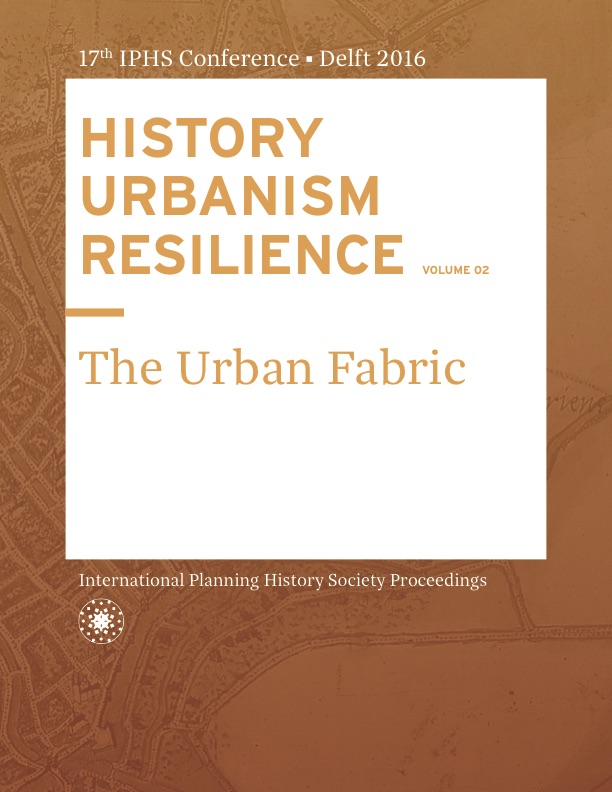Planning a Revolution; Labour Movements and Housing Projects in Tehran, 1943-1963
DOI:
https://doi.org/10.7480/iphs.2016.2.1222Abstract
When life itself becomes a political project, any distinction between space of action and dwelling ceases to exist. Contemporary bio-capitalism is nothing but the strenuous attempt to parasite and make productive any form of living far beyond the body and the spatial-temporal coordination of its movement, subsuming the whole complexity of relations, affects, desires as crucial driving forces of development.The most typical domestic activities, traditionally concealed as ‘unproductive’ and ‘servile’ unpaid labour, have become paradigmatic forms of exploitation, to the extent that household management, reproduction, affectivity and care have become, today, the fundamental qualities of the ubiquitous field of labour precarity. In this sense, dwelling itself has been stripped out of its spatial organizations and traditional protective clichés, becoming the most profitable living performance of value production, triggering a progressive hybridization of the domestic space through a parallel and opposite feminization of labour and an internal masculinization of the Existenzminimum. This differentiation indeed is tended to neutralize the life itself. The emergence of such forms of life has progressively eroded the strict division between public and private space, blurring Hannah Arendt’s distinction between work, labour and political action. The city becomes at the same time a continuous field of exteriorized publicity and a sequence of autonomous, privatized interiors.
Tehran is a paradigmatic case of the latter phenomenon, in which collective life proliferates almost entirely in interiors. Commercial, productive and living activities are confined between the same architectural types, which stretch throughout the metropolis as a continuous field of urbanization. In particular, the house is the place where all the economic, political, social, theological and class conflicts are deployed. In Tehran, parallel to the Post- World War II political movements (1943-63), the immediate need for massive reconstruction not only resulted in developing new construction techniques and planning regulations, but also paved the way for direct implementation of series of political projects. Those could be seen as attempts to instrumentalize technology and modernist architectural and planning concepts in order to tame the socio-political tensions. This period is mainly characterized by the project of secularization, at the center of which was the mass housing projects.
The paper will read the early Post-WW II (social) housing projects of the city, in light of social and political mobilization of the country. It will take into account the works of architects and planners who were associated with the Tudeh Party (Iranian Communist Party) and the Iranian Oil industry movements, as well as the American agents who were in charge of executions of the Truman’s Point IV program in Iran. It aims ultimately to cast light on series of projects and counter-projects through which both the city and the citizens were kept in a constant state of conflict, the effects of which triggered the Islamic Revolution in 1979.
References
Abrahamian, Ervand. A History of Modern Iran. Cambridge: Cambridge University Press, 2008.
Afary, Janet, and Anderson, Kevin B. Foucault and the Iranian Revolution: Gender and the Seductions of Islamism. Chicago and London: University of Chicago Press, 2005.
Agamben, Giorgio. The Highest Poverty: Monastic Rules and Form-of-Life. Stanford: Stanford University Press, 2013.
Bahrambeygui, Hushang. Tehran: An Urban Analysis. Tehran: Sahab Books Institute, 1977.
Castoriadis, Cornelius. On Plato’s Statesman. Stanford: Stanford University Press, 2002.
Editorials. “Society of Iranian Architects.” Architece 1, 1946.
Emami, Jamal. “Parliamentary Debates.” 16th Majles (parliament) Debate Transcripts, November 3, 1951.
Firouz, Maryam. “Central Committee- The Association of Women, Women Movement in Iran.” Rahbar, no.829, October 2, 1946.
Karimi, Pamela. “Dwelling, Dispute, and the Space of Modern Iran.” In Governing by Design: Architecture, Economy, and Politics in the Twentieth Century, edited by Aggregate, 119-141. Pittsburgh: University of Pittsburgh Press, 2012.
Khosravi, Hamed. “The City as Paradise, Spatialisation of Sovereignty in Early Iranian Cities.” In The Next Urban Question, edited by Valentina Bandieramonte et al, 270-285. Rome: Officina Edizioni, 2013.
Schmitt, Carl. The Nomos of the Earth (New York: Telos Press Publishing, 2006).

